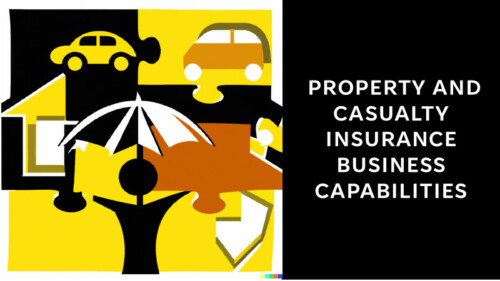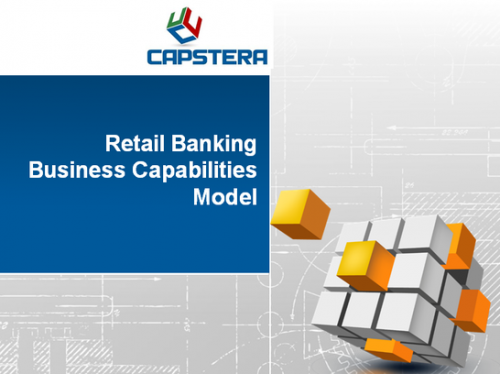
This post will review how banking capabilities drive application portfolio rationalization. Banking capabilities are the foundation of an effective business architecture. As banking business architecture practitioners know, the value of a business capability model extends beyond the core usage scenarios. One of the critical areas in that a bank can use a banking capability model is application portfolio rationalization.
Banking is a business where companies have gone through a generational shift in technologies and systems, leaving a legacy environment that is complex. This complexity applies in particular to banks that have passed through a series of mergers and acquisitions over the years. Moreover, a patchwork of newer technologies, without a thorough clean-up of legacy systems, has made the situation spiral out of control.
The approaches to application portfolio rationalization have always been technology-driven approach. It typically involved an analysis of the state of the application on various measures and then making a decision – retire, re-architect, replace, maintain (or equivalent), etc. While this is still a required step, what is lacking is how does a bank relate to the business and explain the rationale and present the conclusions in a manner that is not esoteric and arcane? So a pure top-down analysis of applications and a decision matrix for rationalization is not sufficient.
A business-centric Approach is centered around banking capabilities:
What is needed is a more business-centric approach, and viola, enter the banking business capabilities model. A structurally sound and internally coherent banking business capabilities model will help include the business or let the business drive the process of application portfolio rationalization.
Seven Steps for using banking business capabilities to drive application portfolio rationalization:
-
Define a Business Capabilities Model Encompassing All Functions The first step involves defining a business capabilities model that comprehensively includes all functional areas. This is a critical foundation for rationalizing an application portfolio because it defines what the organization requires to function and succeed in its objectives. This model represents the totality of abilities that a company needs to provide value to its customers and stakeholders. It spans sales and marketing capabilities, product development, operations, finance, and HR. This step demands a deep understanding of the organization’s business and its markets so the model truly reflects all the capabilities required to stay competitive and grow.
-
Prioritize the Core Business Capabilities Based on a Set of Assessment Criteria Once the business capabilities model is defined, it’s time to assess and prioritize these capabilities based on a predetermined set of criteria. It’s crucial to rank capabilities by their strategic importance, how mature the underlying business processes are, how technologically enabled they are, and whether they are adequately resourced. By this assessment, the organization can identify its core capabilities – those that are most critical to its strategic objectives and performance. Prioritizing capabilities ensures that the rationalization effort aligns with the business strategy and supports what is most important for the organization’s success.
-
Compile an Inventory of Applications/Systems Simultaneously, the technology team should compile an exhaustive inventory of the applications and systems used throughout the organization. This includes off-the-shelf software, custom-built applications, databases, cloud-based services, and infrastructure. The inventory should cover application characteristics such as purpose, users, dependencies, data created or used, and costs. This gives a complete picture of the existing application landscape and is a prerequisite for assessing how well the applications support the business capabilities.
-
Assess Applications/Systems Once the inventory is complete, each application/system should be assessed based on various criteria, such as its alignment with the enterprise architecture, its technical stack, the extent of technical debt it carries, its maintenance costs, and its overall cost-effectiveness. The goal here is to determine each application’s current and future value, its technical health, and whether it is a drain on resources or a value add to the organization. This assessment helps inform which applications should be kept, replaced, retired, or consolidated.
-
Map Relationships Between Applications and Capabilities This step involves mapping each application in the inventory to the business capabilities it supports and assessing to what extent it does so. This footprint (or toeprint) provides visibility into how applications enable capabilities and where there is duplication, replication, redundancy, and reduced usage. It gives business leaders a clearer understanding of how technology supports the business and where opportunities exist to streamline and improve.
-
Perform Multi-factor Weighted Average Assessment After the application-to-capabilities mapping, perform a multi-factor weighted average assessment that considers the individual evaluations of capabilities and applications, their interrelationships, and additional technical details. The aim is to place applications into different buckets based on their strategic importance, technical health, and cost-effectiveness. The outcome of this analysis could be a classification of applications into categories such as “invest,” “maintain,” “tolerate,” and “eliminate.”
-
Create a Phased Sequencing of Rationalization and Optimization The final step involves defining the future of each application based on the assessments and analyses performed. The Application Portfolio Rationalization (APR) team should then plan a phased sequence for implementing these decisions. This plan should consider the impact of changes on business operations, the risks involved, resource availability, and other constraints. The sequencing can range from quick wins, like retiring redundant applications, to long-term plans like investing in new technology platforms to enable key capabilities.
Capstera offers a detailed and in-depth Bank Capability Map to help banks get a holistic perspective of what are retail banking capabilities. The Bank capability map is a set of industry/sector-specific capabilities models that Capstera offers.
-

Business Architecture Current State Audit
-

Business Capability Management Playbook






